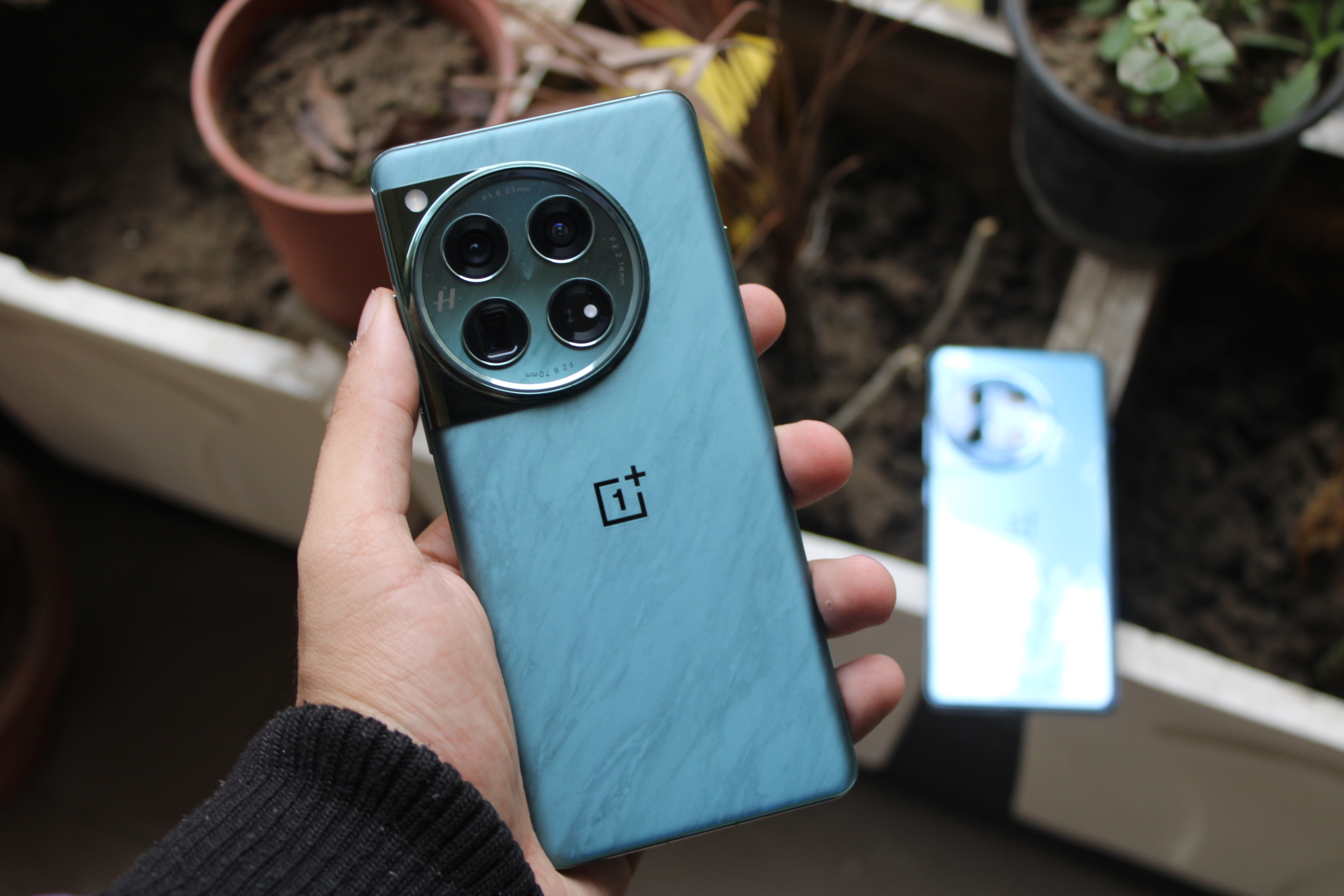Tech
5 phones you should buy instead of the Google Pixel 9 Pro | Digital Trends
It’s been quite an exciting year for smartphones, especially with the arrival of the Google Pixel 9 series. Google gave its flagship phone a refreshing new design, more power and performance, and fun new colors.
If you’re considering the Pixel 9 Pro this year, that’s a great choice! We love the Pixel 9 Pro. But there are also other options to consider at a similar price point or even less. Before you buy the Pixel 9 Pro, here are five other phones you may want to get instead.
Google Pixel 9
This year, Google introduced three Pixel 9 models, two of which are the same size: the base Pixel 9 and Pixel 9 Pro, both at 6.3 inches. If the main reason you want a Pixel 9 Pro is for the size, then you may also want to take a look at the standard Pixel 9.
Even though the Pixel 9 is the base model of the Pixel 9 family, it still packs in quite a punch. Google gave it some gorgeous colors this year, including a fantastic Peony pink, and the 6.3-inch phone is very lightweight and comfortable to hold. Though the screen is a 6.3-inch Actua OLED display, it still has a variable refresh rate between 60Hz and 120Hz and a maximum brightness of 2700 nits.
This entry-level Pixel 9 has a dual camera setup on the rear with a 50MP primary camera and a 48MP ultrawide lens. With this camera system, it’s hard not to take a good photo with the Pixel 9. This setup is perfectly fine if you don’t necessarily need a telephoto lens. And with Google’s AI camera tricks, any photo you take can be perfectly fine-tuned.
Like its Pro sibling, the Pixel 9 has the Tensor G4 chip. It also comes with 12GB RAM. It’s a little less than the Pro variants, but it’s still enough to run Android 14 and Google Gemini AI features without issue. It also has the same 4,700mAh battery as the Pixel 9 Pro, and it can last the entire day without having to plug it in, which is impressive.
With the Pixel 9, you get most of the same features as the Pixel 9 Pro, but in better colors and for less money. What’s not to like?
Google Pixel 9 Pro XL

If you insist on sticking with the Pixel 9 Pro because of features like the cameras and more RAM and storage, you might also want to consider the Pixel 9 Pro XL — as long as you don’t mind a larger size.
The Pixel 9 Pro XL is the same as the Pixel 9 Pro, but with a larger 6.8-inch Super Actua display instead of 6.3 inches on the Pixel 9 Pro. It also has a larger battery capacity at 5,060mAh and faster wired charging speeds, as it can get to 70% charge in 30 minutes (45W), whereas the smaller Pro only gets to 55% in 30 minutes (30W).
Otherwise, the Pixel 9 Pro XL and Pixel 9 Pro have the same features: a triple-lens camera system with a 50MP main camera, 48MP ultrawide, 48MP telephoto with 5x optical zoom, and a 42MP selfie camera. Inside is the same Tensor G4 chip and 16GB RAM, storage options from 128GB up to 1TB, and all the Google Gemini AI features with Android 14.
If you don’t mind a larger screen, more battery life, and paying slightly more, then the Pixel 9 Pro XL is the way to go.
Samsung Galaxy S24 Ultra

If you don’t mind spending a bit more, you can pick up a Samsung Galaxy S24 Ultra. Not only is it a bit larger than the Pixel 9 Pro, but it also has a ton of powerful features and is still a very good phone despite being nearly a year old.
The Samsung Galaxy S24 Ultra has a whopping 6.8-inch Dynamic AMOLED display, the same size as the Pixel 9 Pro XL. The display is comparable to the Pixel 9 Pro, though the brightness only reaches 2500 nits instead of 3000 nits. It also has a dynamic refresh rate between 1Hz and 120Hz.
If you want an impressive camera system, the Galaxy S24 Ultra has it. It delivers an impressive camera setup with a 200MP primary camera, 12MP ultrawide camera, 10MP telephoto with 3x optical zoom, and a 50MP telephoto camera with 5x optical zoom. These are definitely grand numbers, and the photos that you can capture with them are just as impressive.
Samsung uses Qualcomm’s Snapdragon 8 Gen 3 for Galaxy chip, which performs better than the Tensor G4. It also has 12GB RAM and up to 1TB storage. The Galaxy S24 Ultra also has an integrated S Pen, which gives it an edge in productivity.
Even though we’re coming up on almost a year for the Galaxy S24 Ultra, it’s still an incredible phone. And though it has a high starting price of $1,300, it shouldn’t be too difficult to find some good deals now.
OnePlus 12

If you want a flagship smartphone without a flagship price tag, look at the excellent OnePlus 12. Again, this is another one of the larger Android phones, so you’ll have to adjust to the size if you intended to get a smaller phone.
The OnePlus 12 has a unique design that differentiates it from other smartphones. OnePlus often uses colors and designs that aren’t seen in other phones, and that applies to its signature Flowy Emerald color for the OnePlus 12, though you can also get it in black or white.
You’ll get a 6.8-inch LTPO AMOLED display with curved edges, a 120Hz refresh rate, and an eye-searing 4500 nits of peak brightness. If you need your phone to have the brightest display you’ve ever seen, the OnePlus 12 achieves that. Just be warned, though — the curved edges on the screen may result in unintentional touches if you’re not used to that kind of display. The Snapdragon 8 Gen 3 powers the OnePlus 12, and depending on the storage option you choose (256GB to 512GB), you can have 12GB or 16GB of RAM.
Another benefit of the OnePlus 12 is the cameras. It has a 50MP main camera, 64MP periscope telephoto with 3x optical zoom, 48MP ultrawide camera, and 32MP selfie camera. All of these benefit from OnePlus’ Hasselblad partnership, so you get Hasselblad color tuning and enhancements for your photos and videos.
OnePlus also impresses with its incredible battery life and charging. Its huge 5,400mAh battery can most definitely last more than a day. When you do need to charge it, you can get 80W wired charging in the U.S. and 100W charging globally. This means you can go from 0 to 100% in 30 minutes. There is even support for up to 50W wireless charging and 10W reverse wireless charging.
All these features are mighty impressive, but the price is even more incredible. The OnePlus 12 starts at just $800, and OnePlus has some great trade-in deals and specials that can bring that cost down even lower. Don’t sleep on this one.
iPhone 16 Pro

If you don’t mind trying iOS, you could also consider the recently released iPhone 16 Pro.
Though the iPhone 16 had a pretty nice refresh in design, the iPhone 16 Pro remains the same as the last few predecessors. However, this year, Apple added the new Camera Control button on the lower right edge of the frame, which is convenient.
Elsewhere, the iPhone 16 Pro has Apple’s new A18 Pro chip and 8GB RAM. Storage options range from 128GB to 1TB, and it comes in four neutral colors. With these internals, the iPhone 16 Pro will have no issue with iOS 18 and Apple Intelligence.
The triple-lens camera system is also quite nice. You get a 48MP main “Fusion” primary camera, a 48MP ultrawide lens, and a 12MP telephoto with 5x optical zoom. We recently pitted the iPhone 16 Pro against the Pixel 9 Pro in a camera comparison, and the iPhone 16 Pro did much better overall. So, if you want a great camera, the iPhone 16 Pro is the better choice.
The iPhone 16 Pro starts at the same price as the Pixel 9 Pro, but it really just depends on if you’re able to use iOS or if you prefer to stick with Android. Still, the Camera Control is quite good, and the battery life is an improvement over last year. If you’ve been wanting to try an iPhone, there’s plenty to like with the iPhone 16 Pro.









